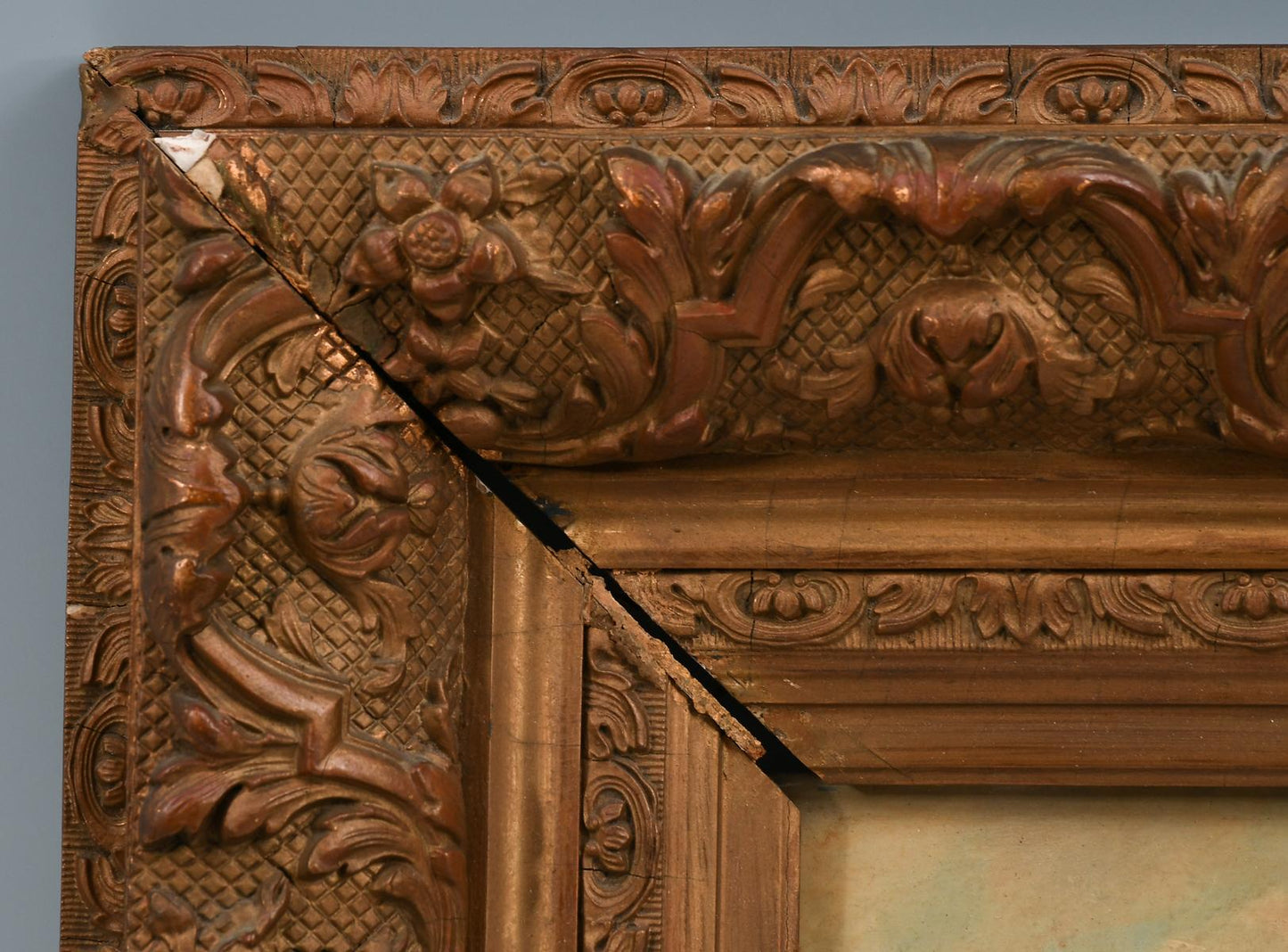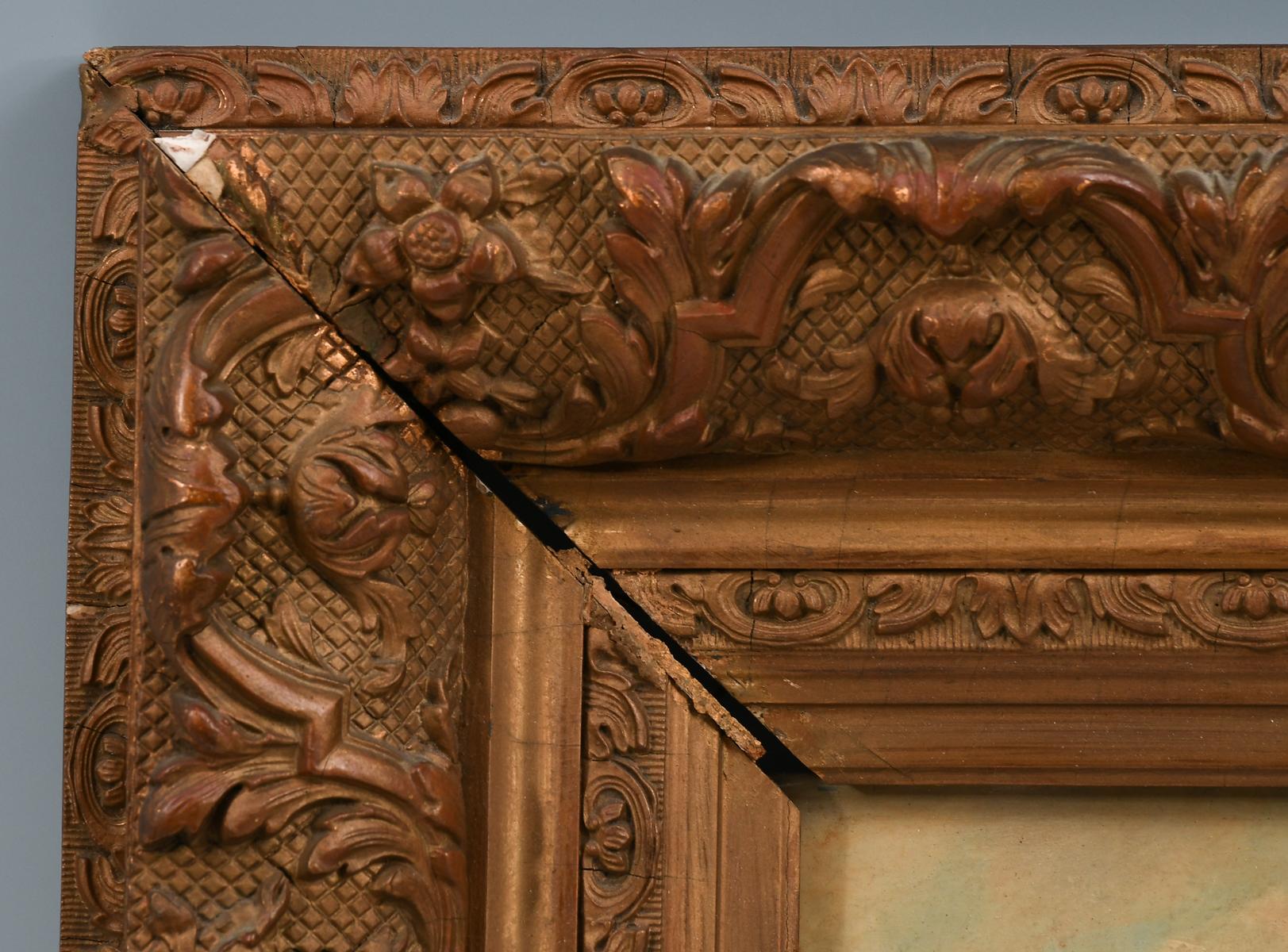Wondrous-Things.com
Andreas Schelfhout 1787 - 1870 Dutch Skating Painting Oil on Panel
Andreas Schelfhout 1787 - 1870 Dutch Skating Painting Oil on Panel
Couldn't load pickup availability
Andreas Schelfhout 1787 - 1870 Dutch Skating Painting Oil on Panel
Highly acclaimed Dutch artist, famous for winter canal scenes.
Similar Dutch skating scene paintings have sold for over $712,000 at Christie's Amsterdam (see Askart sales record)
Oil on panel, signed lower right.
Size: sight 8 inches tall, 12 inches tall. Framed 18 inches tall, 21.75 inches wide.
Heavy gilded and carved frame.
Condition: Needs cleaning, frame is in need of some repair.
$59.99 US fixed rate shipping.
Bio of Andreas Schelfhout
Andreas Schelfhout (February 16, 1787, The Hague - April 19, 1870, The Hague) was a Dutch painter, etcher* and lithographer*, known for his landscape paintings.
He belongs to the Romantic* movement. His Dutch winter scenes and frozen canals with skaters were already famous during his lifetime. He became one of the most influential Dutch landscape artists of his century.
He started as a house painter in the framing business of his father. He already started painting pictures in his spare time. After a well-received first exhibition in The Hague, his father sent him to receive proper training to Joannes Breckenheimer (1772-1856), a stage designer, in The Hague. He learned not only the technical aspects of painting, but also made detailed studies of the 17th-century Dutch landscape artists Meindert Hobbema en Jacob van Ruisdael.
In 1815 he started his own workshop and became a member of the Pulchri studio. Through his technical excellence and sense of composition and his use of naturalistic colours, he soon became famous also outside The Hague. In 1819 he was awarded the Gold Medal at the exhibition in Antwerp. In 1818 he became a member of the Royal Academy for Visual Arts of Amsterdam. He reputation continued to grow, and in 1822 he was given the rank of Fourth Class Correspondent of the Royal Dutch Institute. From then on, one exhibition followed after another.
Initially he painted mainly summer scenes, beach scenes, and animal paintings. But as his initial winter scenes even had more success, he began to include them in his exhibitions. He was mainly a studio artist, relying on his sketches done en plein-air*. His sketchbook Liber Veritatis (Book of Truth) shows that he made about twenty paintings a year, among them a few foreign views. This indicated that he traveled abroad around 1825. In later years he visited France in 1833, England in 1835 (especially to study the works of Constable) and Germany. In 1839 he was awarded the title Ridder in de orde van de Nederlandse Leeuw, and in 1844 he was awarded an honorary membership in Kunst zij ons doel.
He provided training to several painters who would become famous in their own right : Johan Hendrik Weissenbruch, Johan Jongkind (one of the forerunners of the Impressionists), Charles Leickert, Johannes Josephus Destree, Jan Willem van Borselen, Nicholas Roosenboom, Willem Troost, the American Hudson River School* Painter Louis Rémy Mignot and his son-in-law Wijnand Nuyen.
At the end of his career he put together a series of eighty landscape drawings, mainly recordings of previous paintings and watercolours. They were drawn in chalk and lightly coloured.
His death marked the end of the Romantic period in Holland. He is considered a precursor of the Hague School*.
His paintings are on display in several top museums :
• Rijksmuseum, Amsterdam
• Museum Boymans-van Beuningen, Rotterdam
• Dordrechts museum, Dordrecht
• Teylers Museum, Haarlem,
• Museum Jan Cunen, Oss
• KMSK, Antwerp
• MSK, Gent
• Groeningemuseum, Brugge
• National Gallery, London
• The Wallace Collection, London
• Tyne and Wear Museums
Source:
Wikipedia, http://en.wikipedia.org/wiki/Andreas_Schelfhout
* For more in-depth information about these terms and others, see AskART.com Glossary http://www.askart.com/AskART/lists/Art_Definition.aspx
Materials
Materials
Shipping & Returns
Shipping & Returns
Dimensions
Dimensions
Care Instructions
Care Instructions












